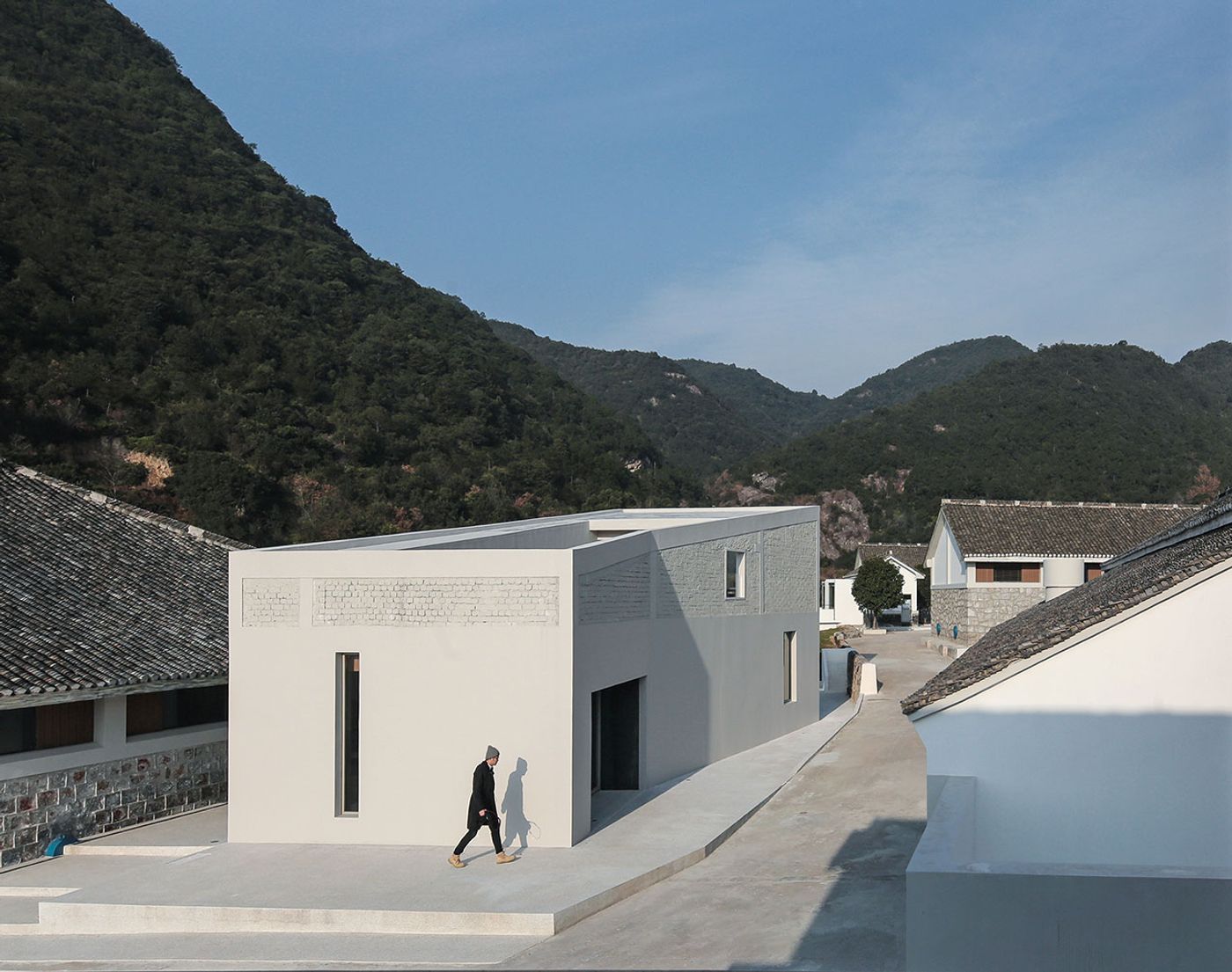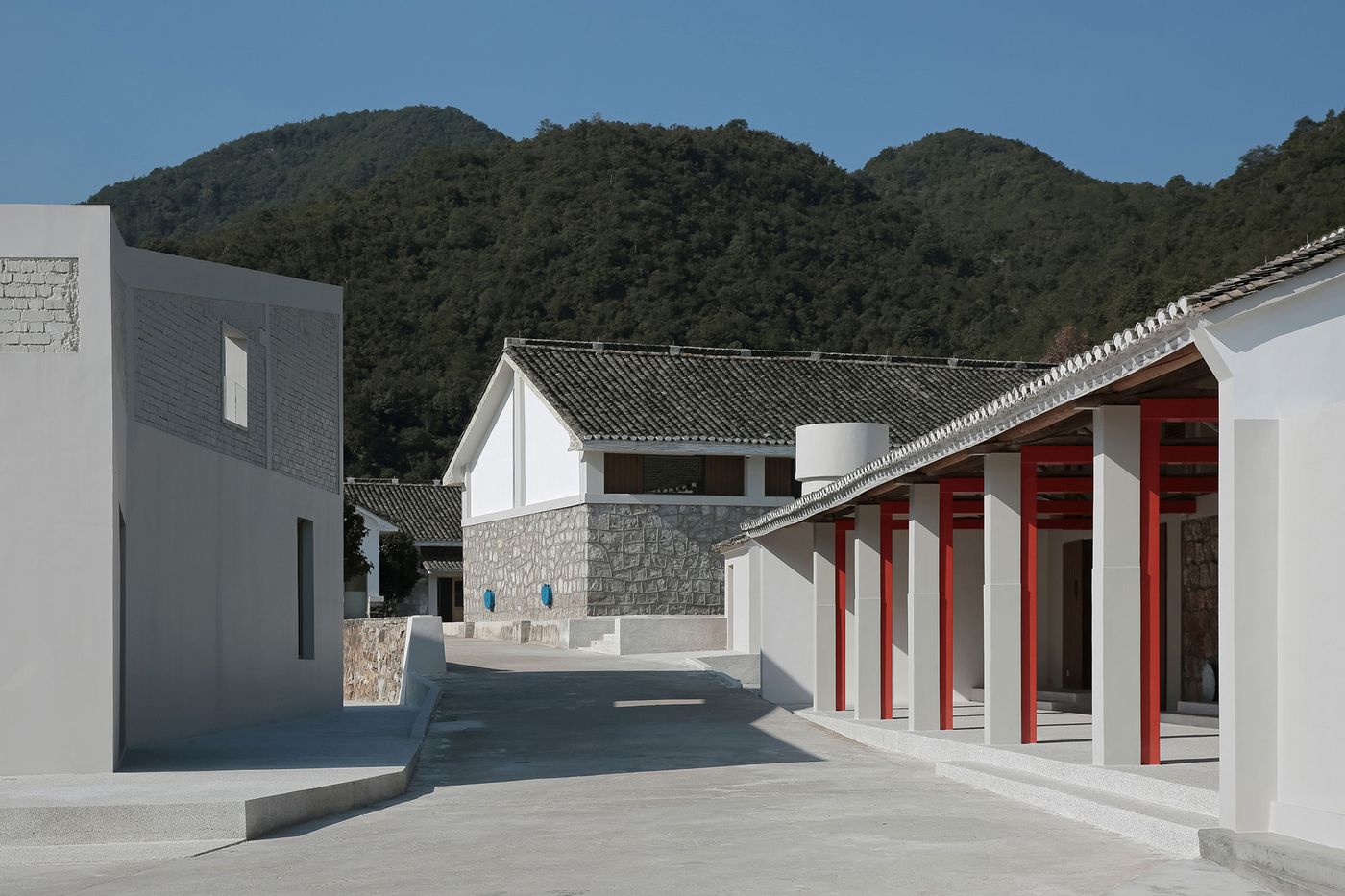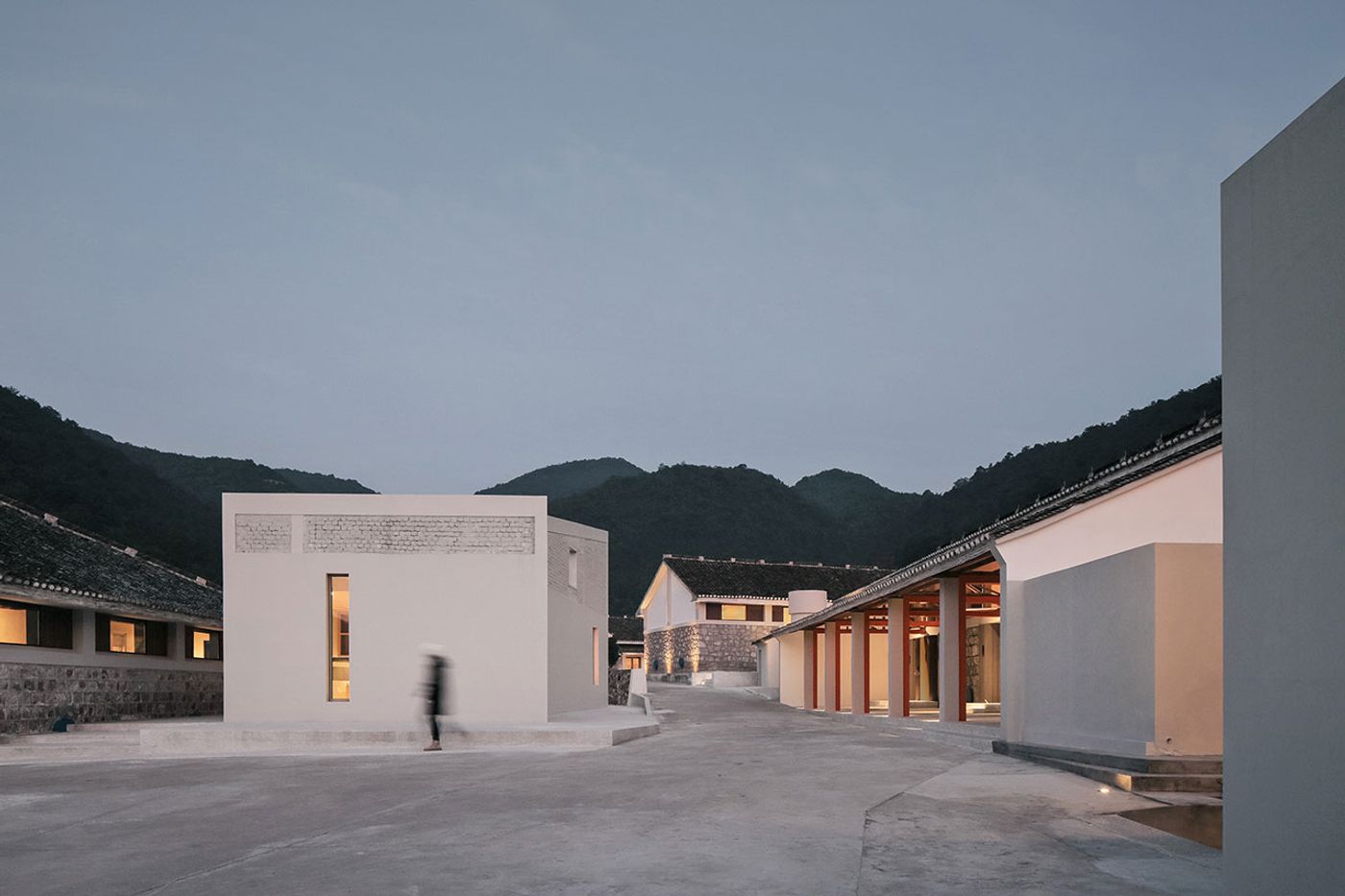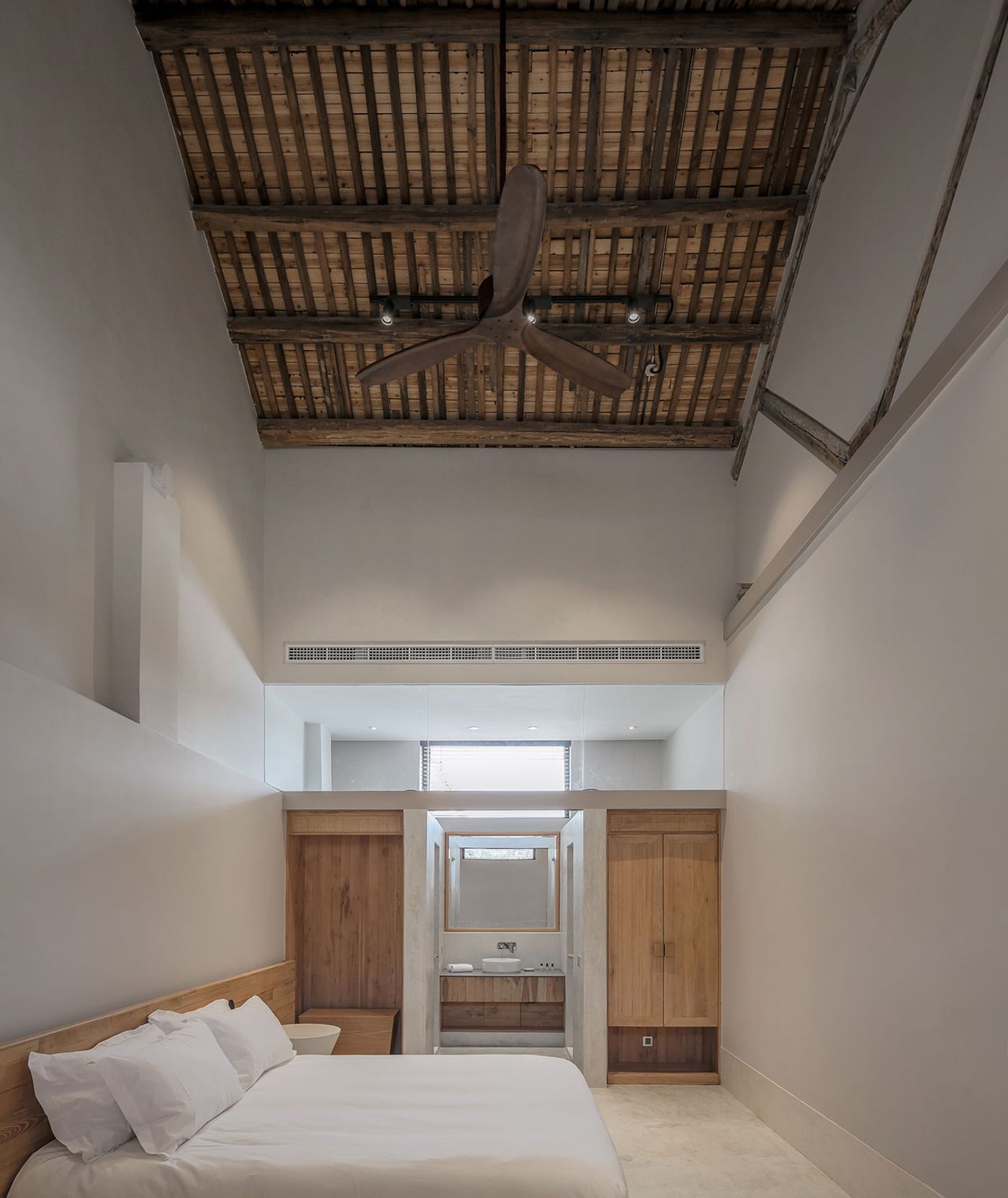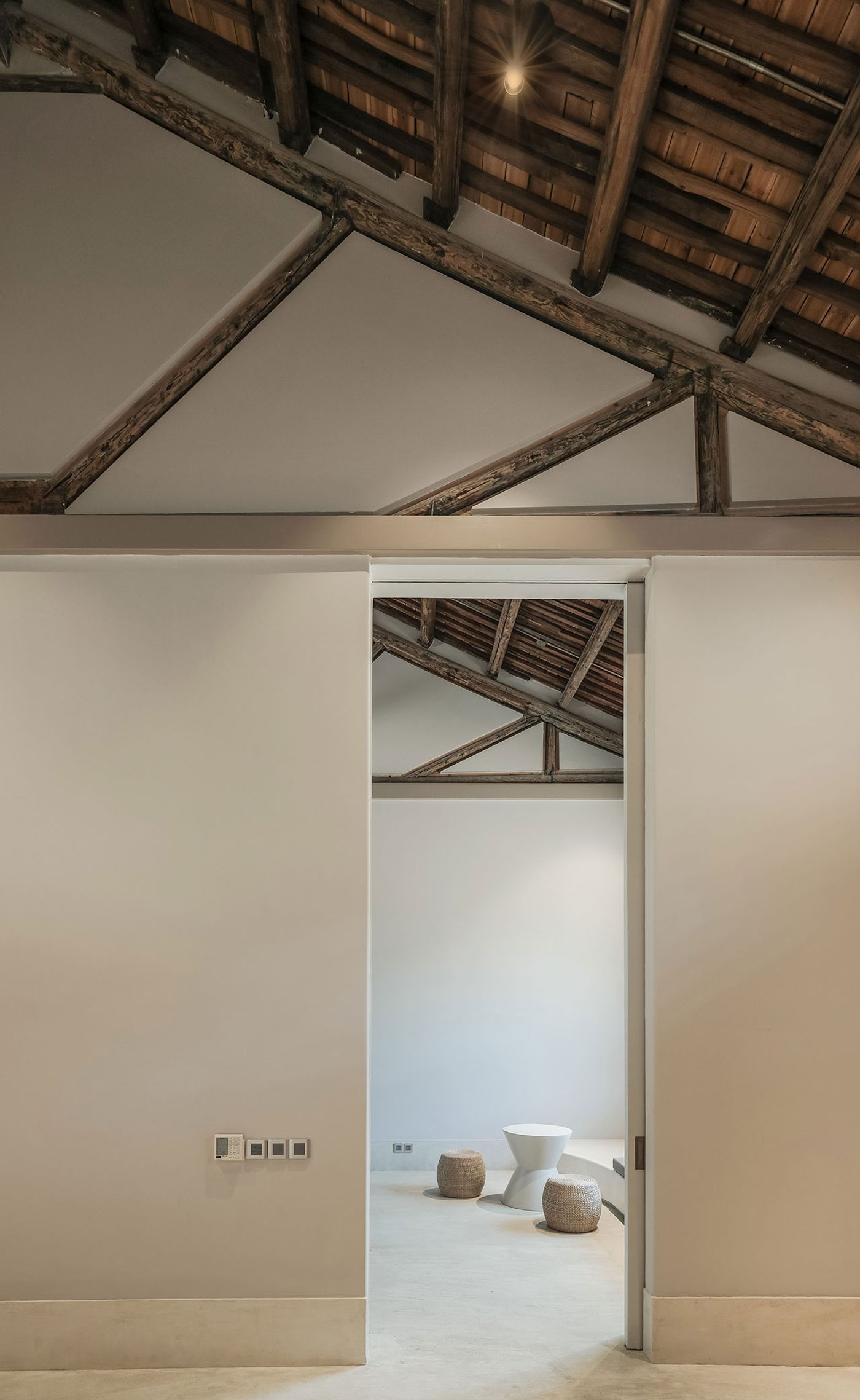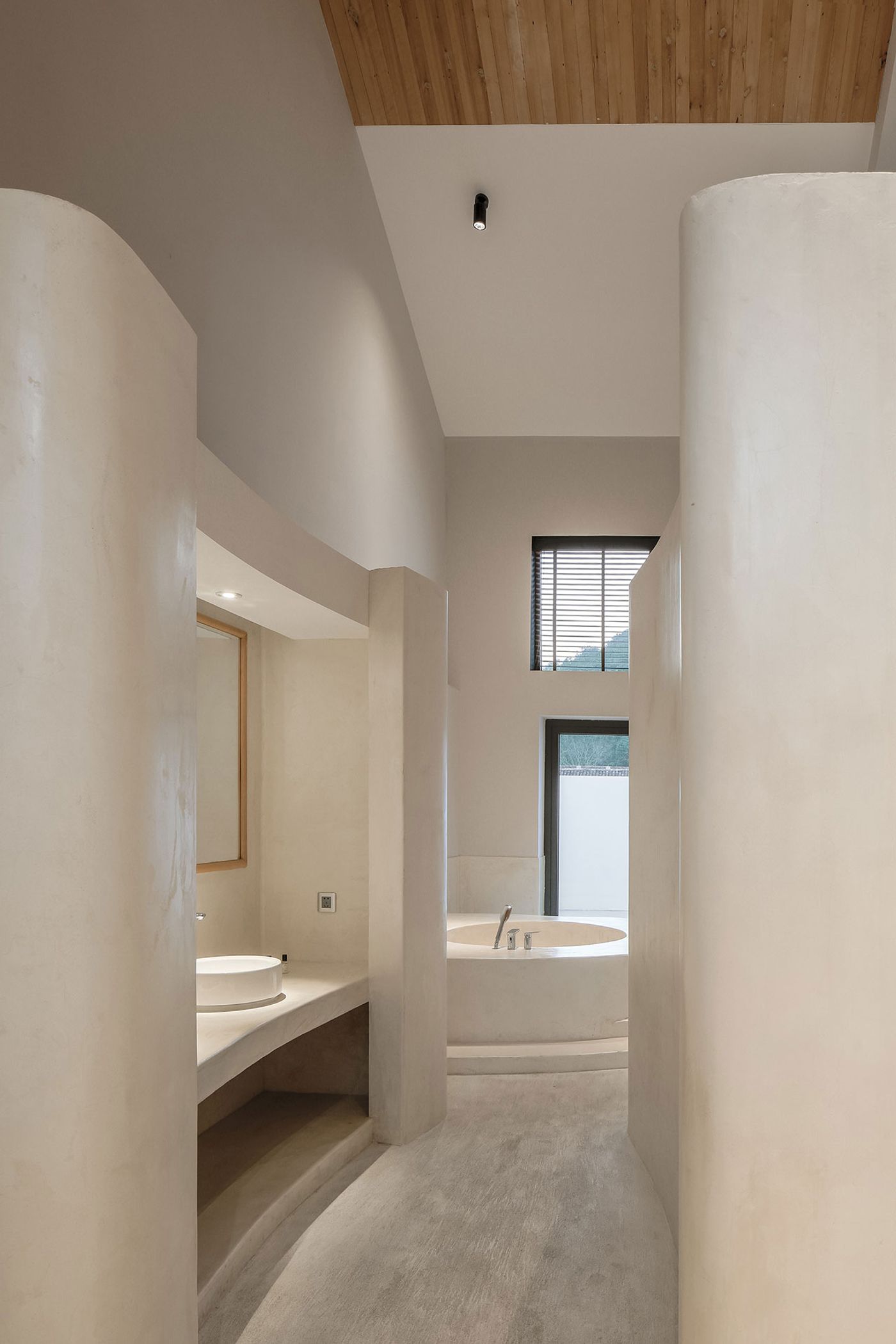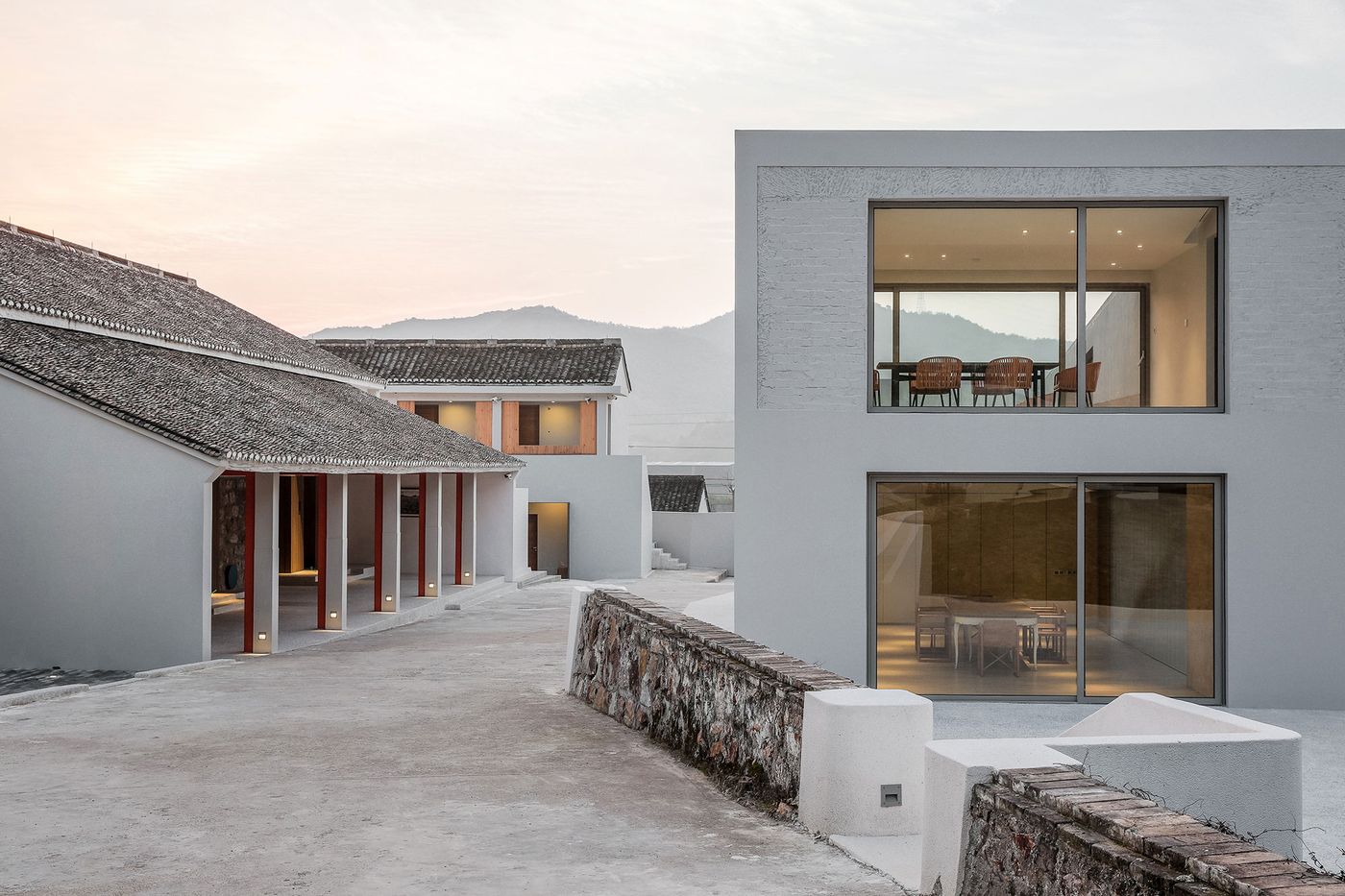
Ares Partners Turn a Rural Granary into a Modern Resort of Ascetic Authenticity
Words by Yatzer
Location
Ninghai County, China
Ares Partners Turn a Rural Granary into a Modern Resort of Ascetic Authenticity
Words by Yatzer
Ninghai County, China
Ninghai County, China
Location
Located amidst the scenic mountainous landscape of Ninghai County southeast of Hangzhou, China, Miya/LostVilla Huchen Barn Resort has taken over a 1956 grain storage facility which Shanghai-based architects Ares Partners headed by Helen Wang have transformed into a modern retreat of minimalist sensibility while retaining its agrarian heritage. The renovation walks a fine line between ensuring that guests are ensconced in modern, comfortable lodgings and preserving the venue’s ascetic authenticity by seamlessly interweaving the old with the new, while also filtering in its beautiful surroundings.
The resort is comprised of six existing different sized buildings that have been renovated with a restrained sophistication, in the midst of which a new building stands out in its abstract, modernist design. Due to their use for grain storage, the existing buildings, predominantly masonry structures made out of stones and bricks, originally only had clerestory windows, built 2.5 metres above ground. The architects selectively enlarged them in both height and width depending on the configuration of the guest rooms, in an attempt to balance the preservation of the original masonry with the desire to grant the interiors an abundance of daylight and views. Meticulous care was also given to removing the multiple layers of white paint that had accumulated over the years on the buildings’ exterior in order to reveal the original stonework on the lower part of the walls.
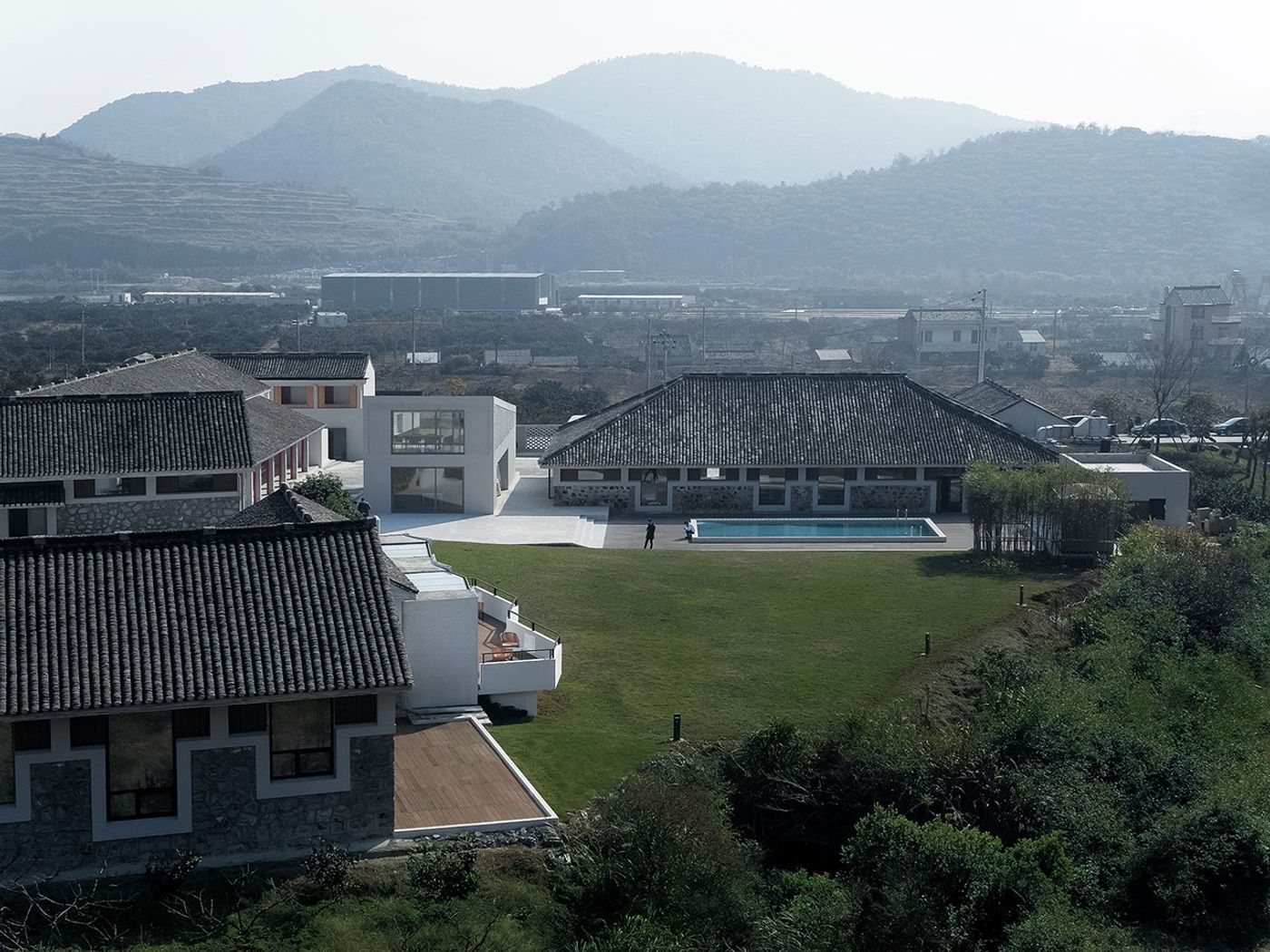
Photo by Su Shengliang.
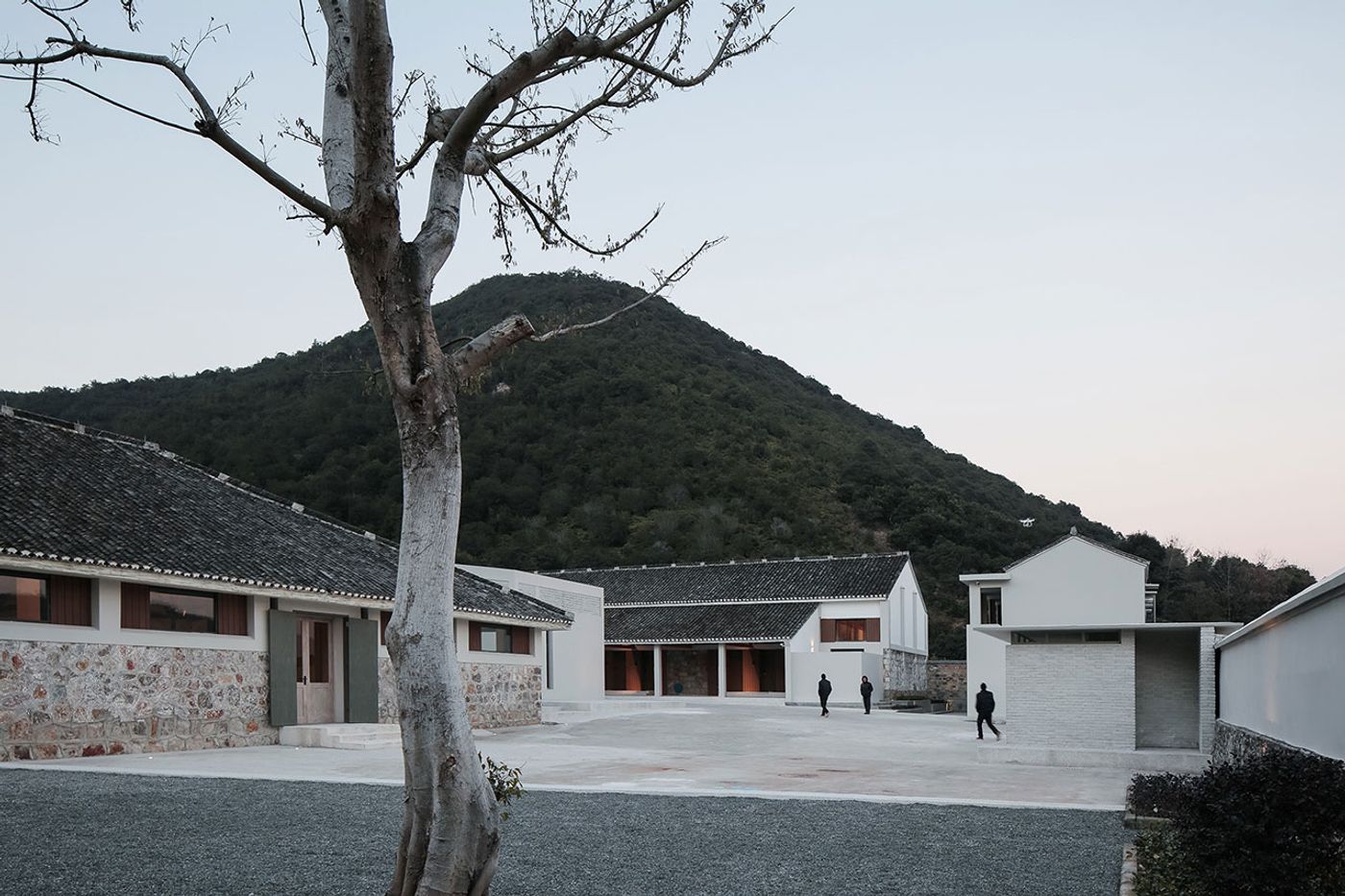
Photo by Su Shengliang.
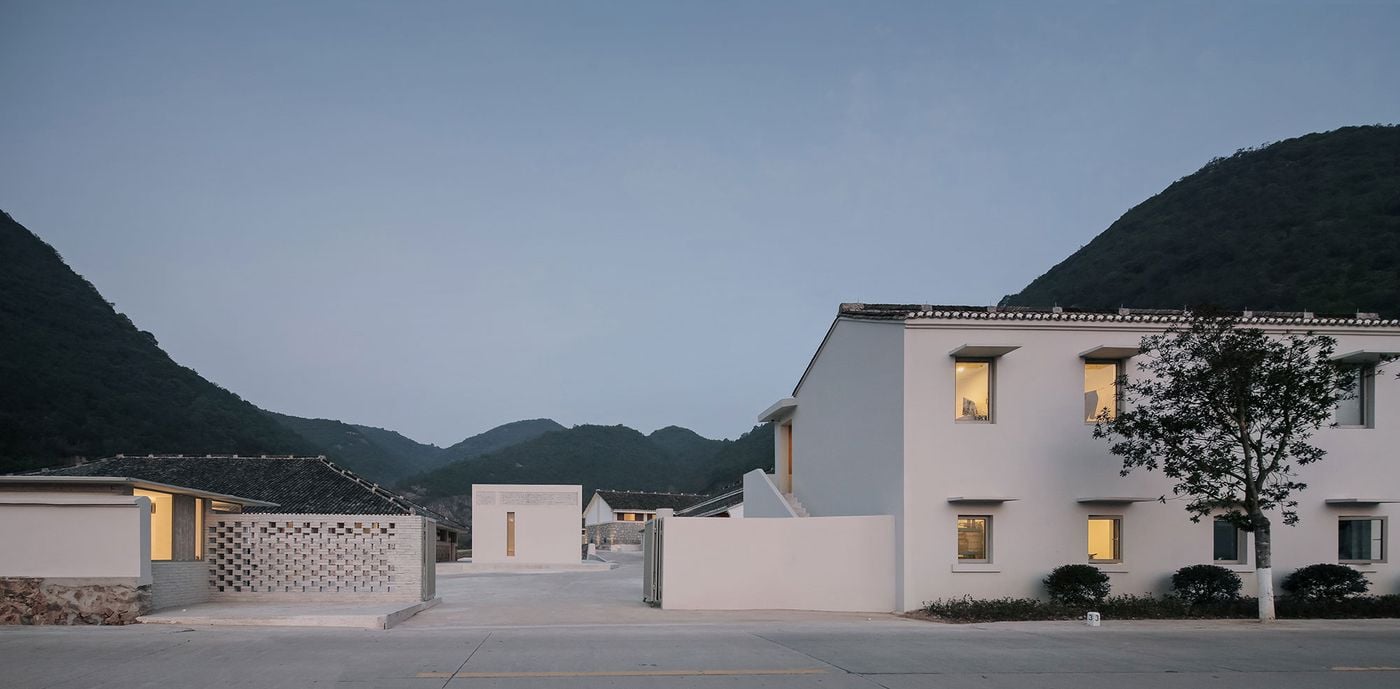
Photo by Su Shengliang.
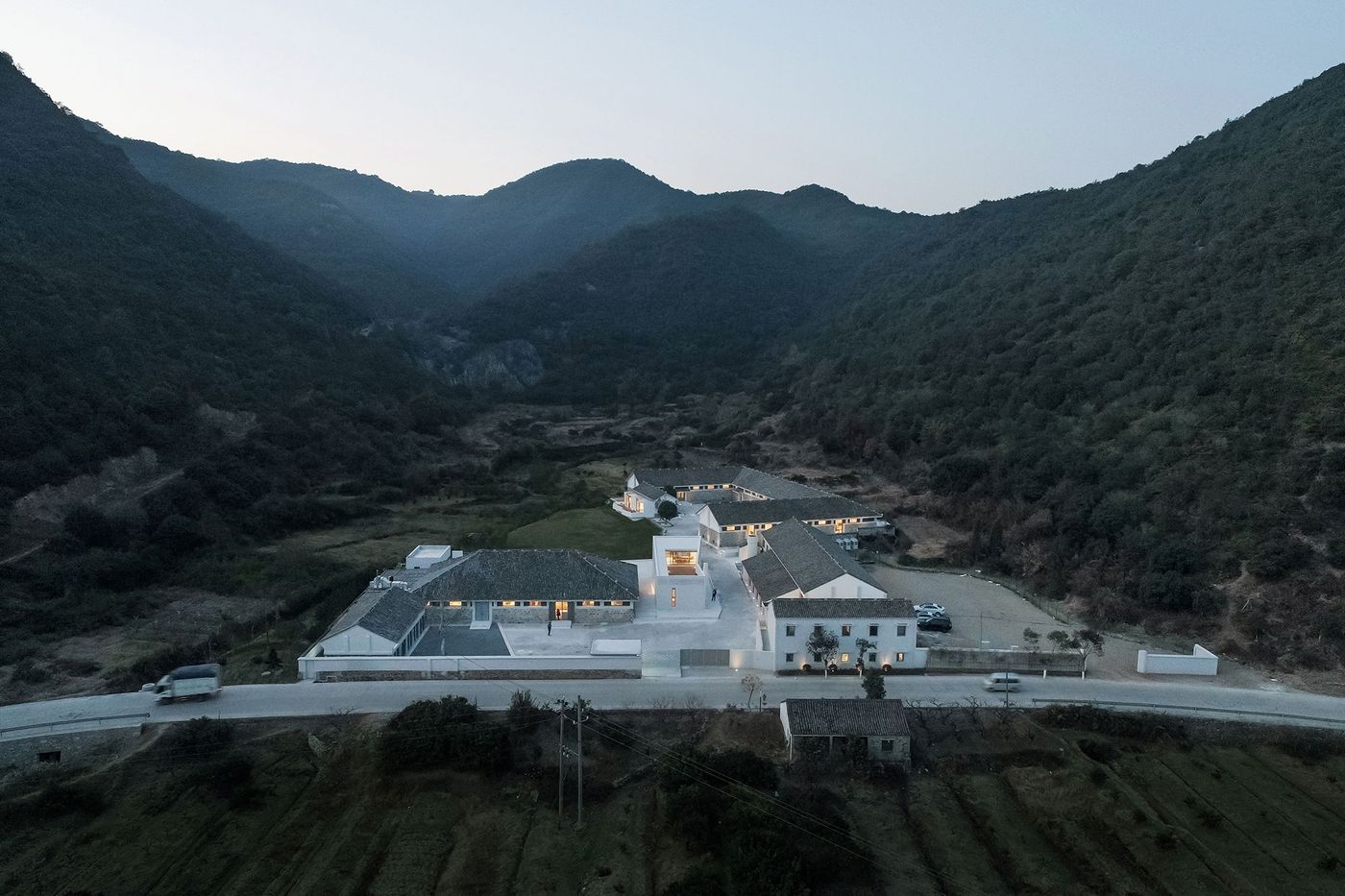
Photo by Su Shengliang.
Unlike the existing buildings that feature traditional gable roofs and rectangular floor plans, the newly built addition, which stands in front of the resort’s entrance in the place of a demolished building from the 1970s, is designed as a prismatic volume that has been shaped in response to its surroundings. In order to avoid obstructing the mountain views as guests enter the grounds, the building gradually increases in height from a single-storey where the reception is located, to two floors housing the tea room, which enjoys panoramic views courtesy of wide, floor-to-ceiling windows. Despite its angular shape and modernist sensibility, the all-white structure harmoniously blends in with the revamped rural architecture and the verdant hills beyond.The building on the west of the reception houses the resort's restaurant and lounge area under a meticuslously restored timber roof structure, while at the back a generous terrace and outdoor pool offers guests the chance to take in the surrounding scenery in style.
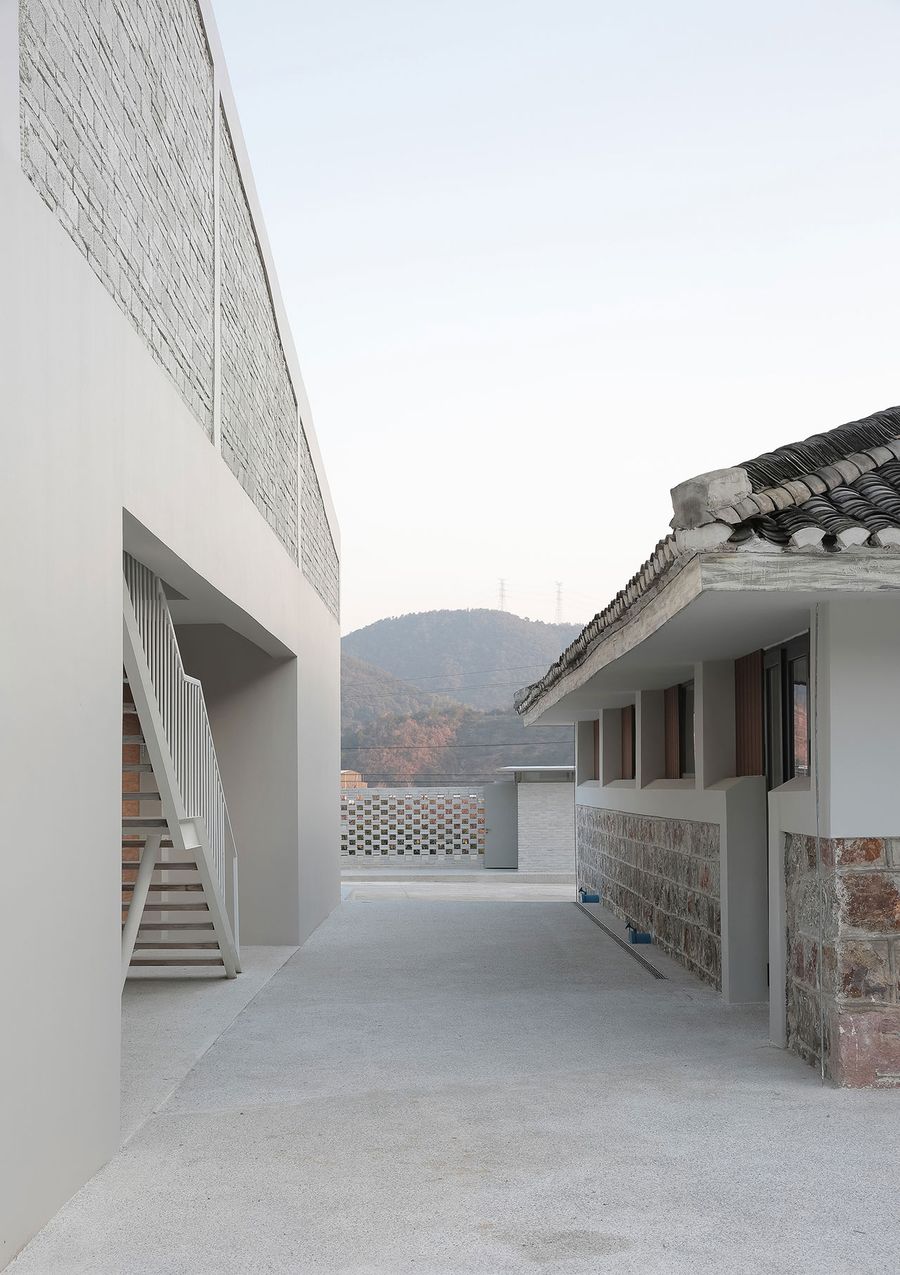
Photo by Su Shengliang.
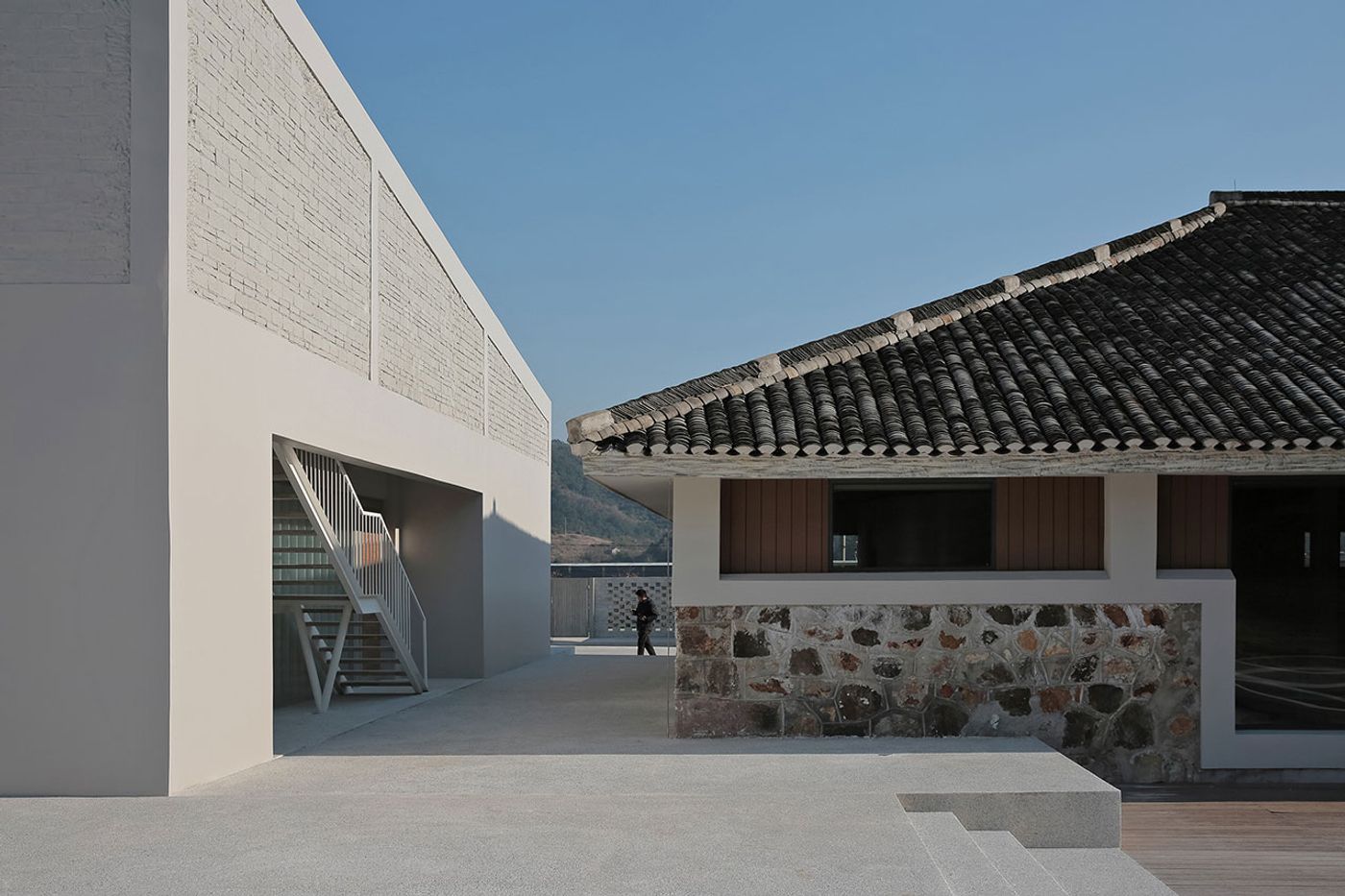
Photo by Su Shengliang.
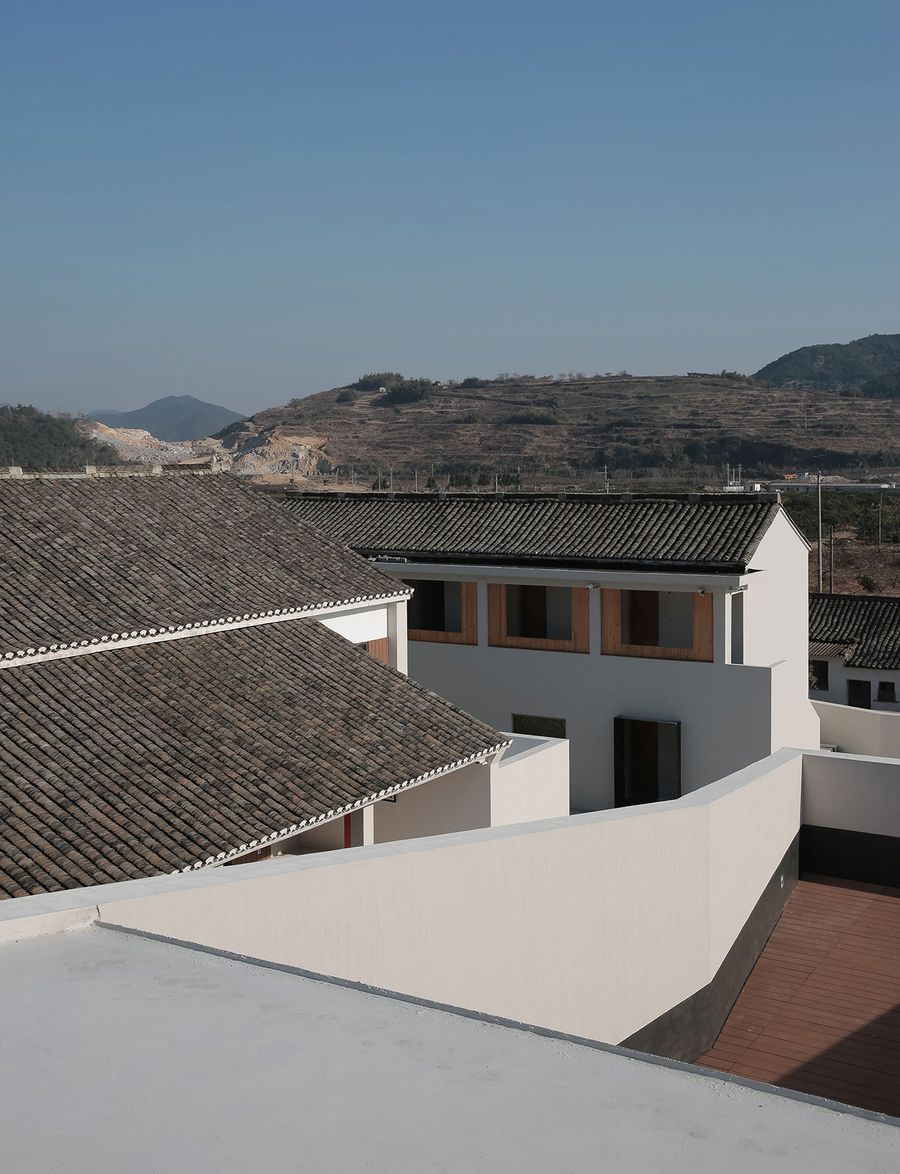
Photo by Su Shengliang.
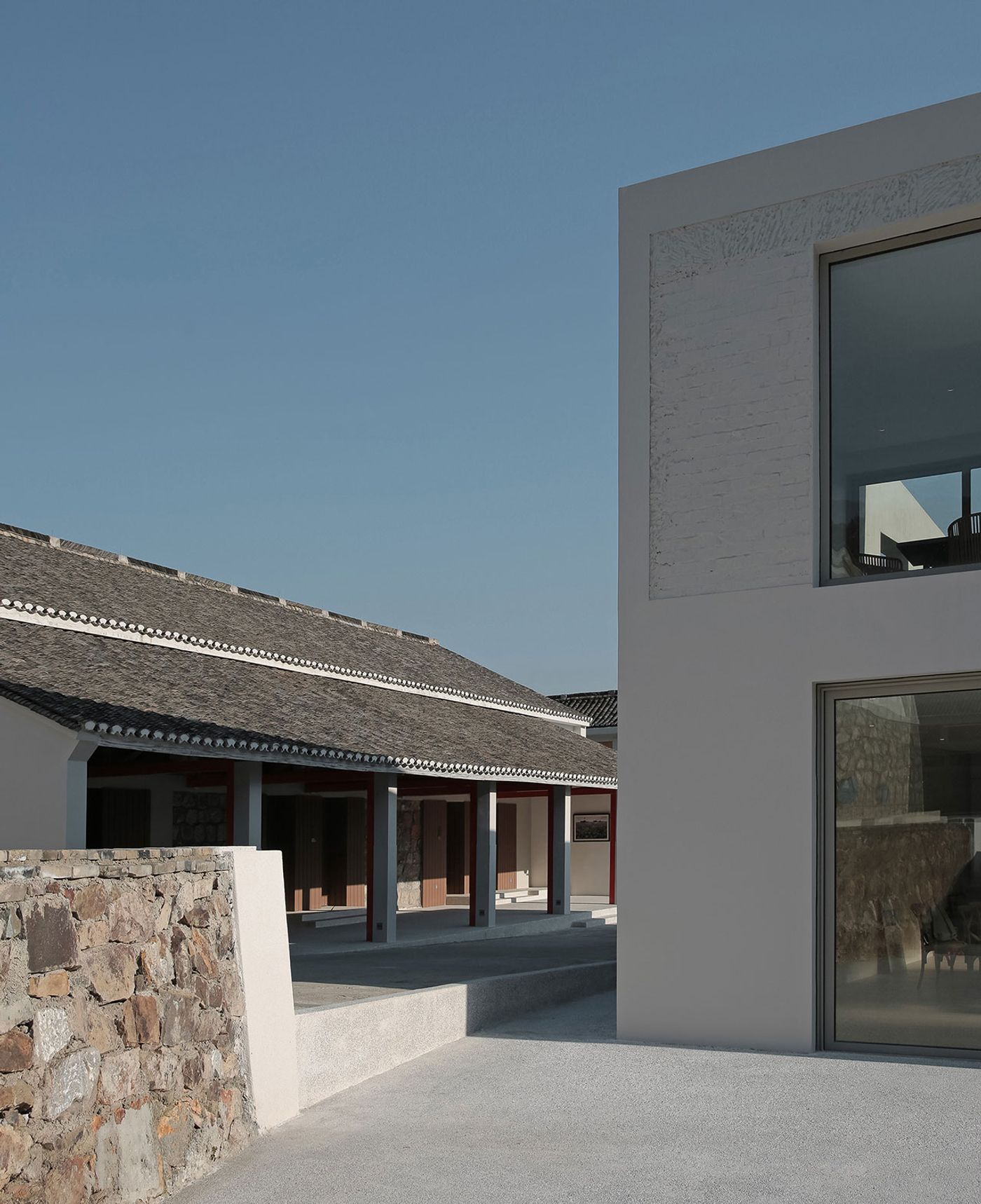
Photo by Su Shengliang.
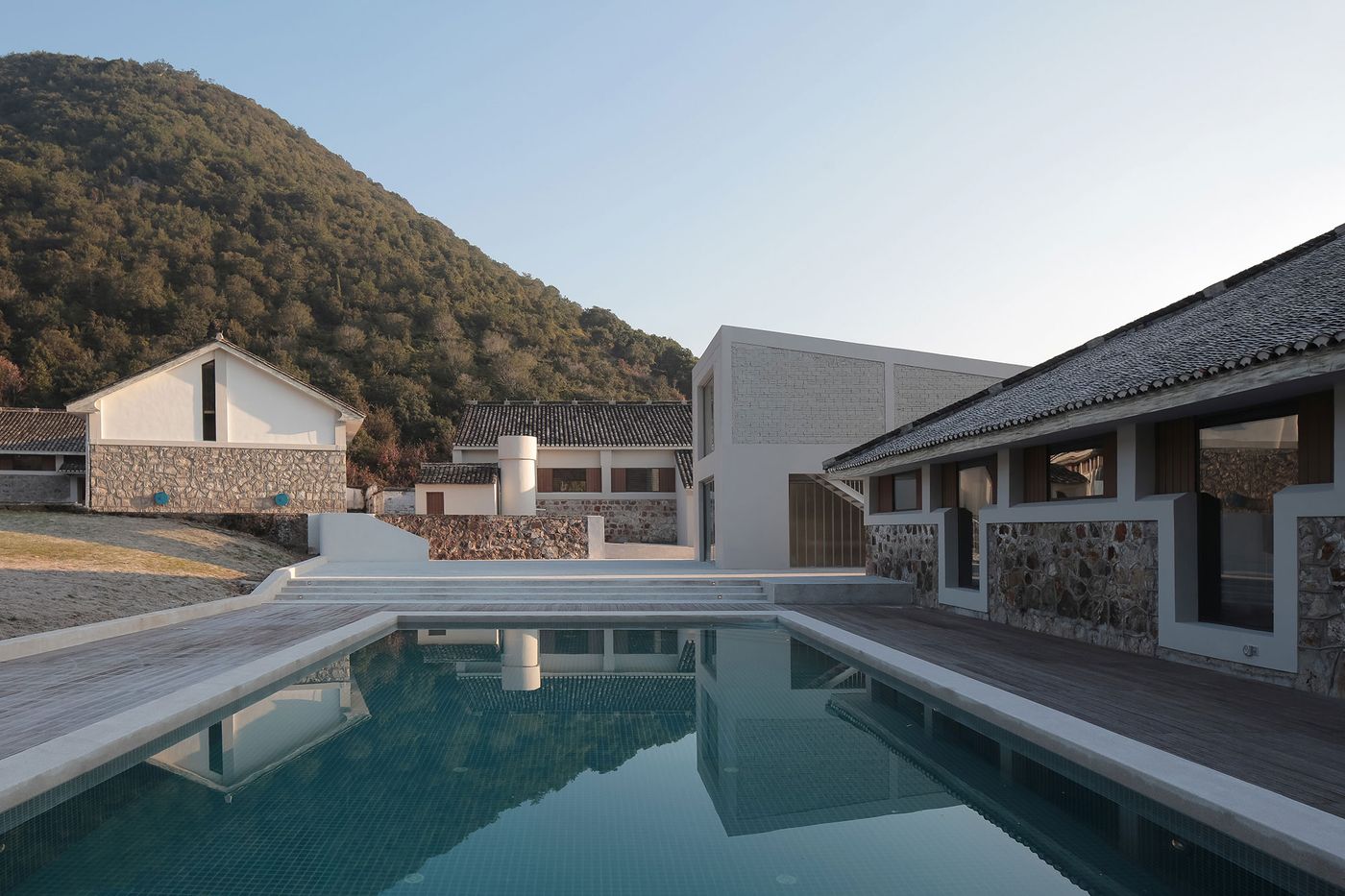
Photo by Su Shengliang.
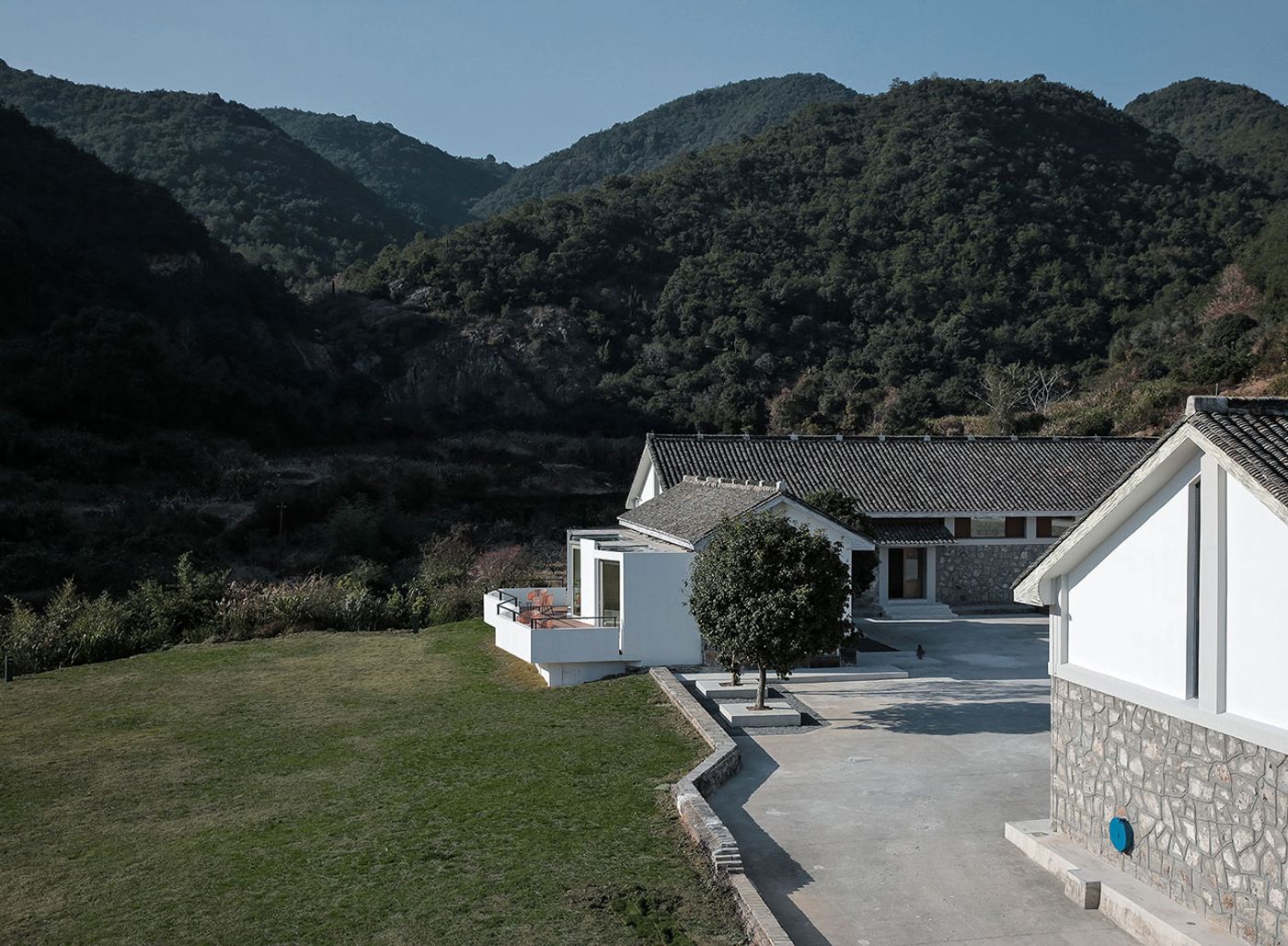
Photo by Su Shengliang.
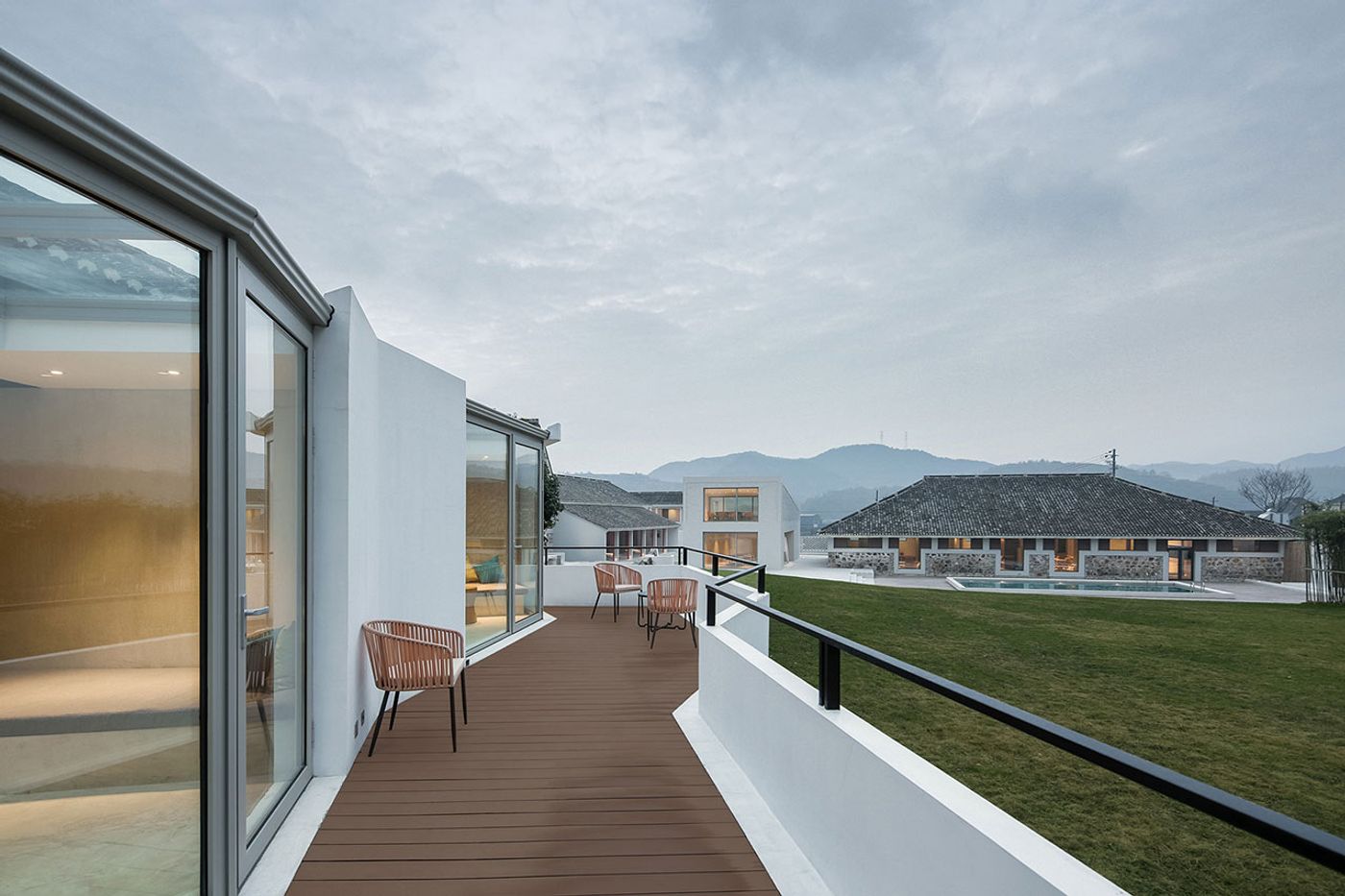
Photo by Su Shengliang.
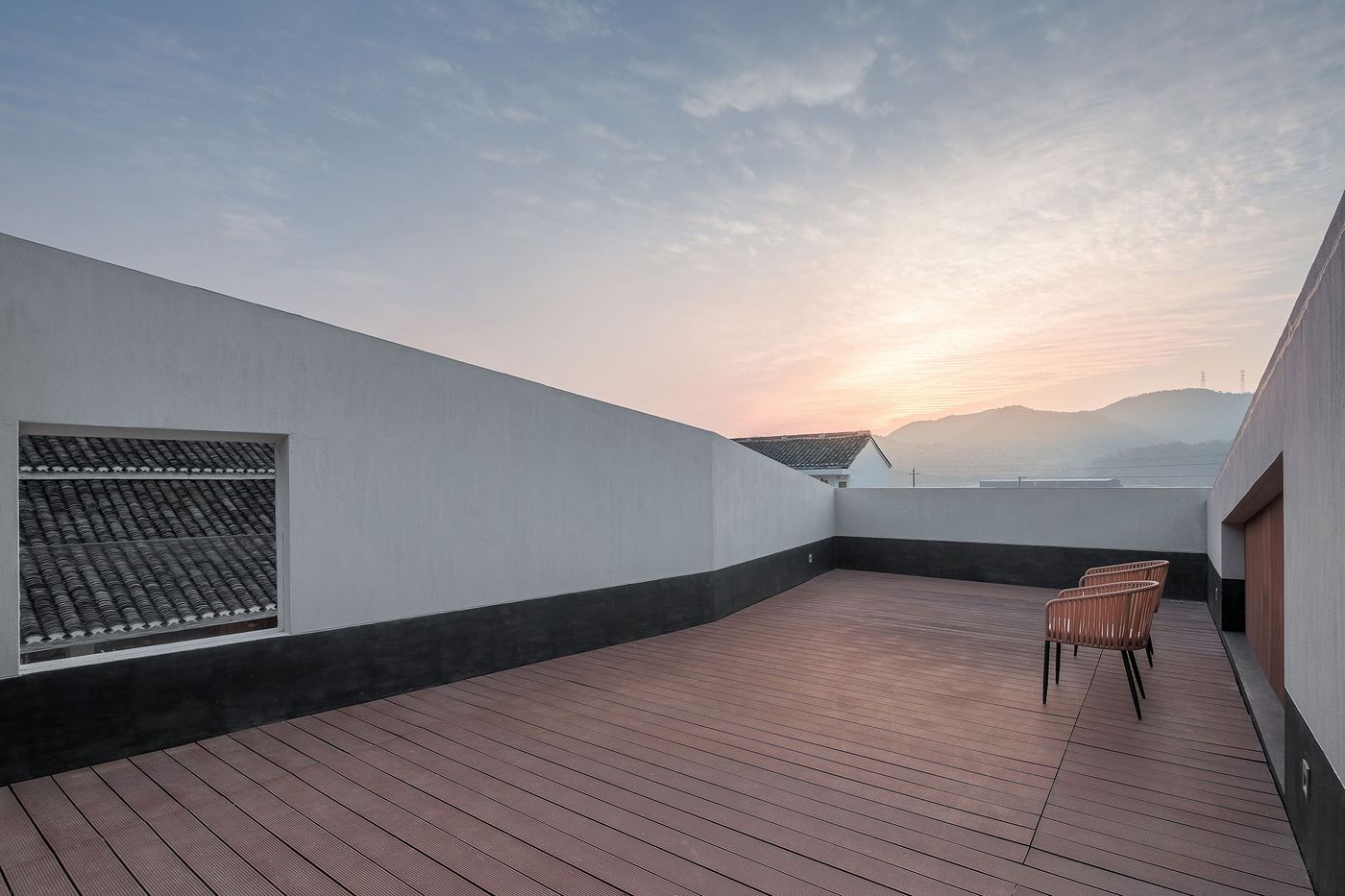
Photo by Su Shengliang.
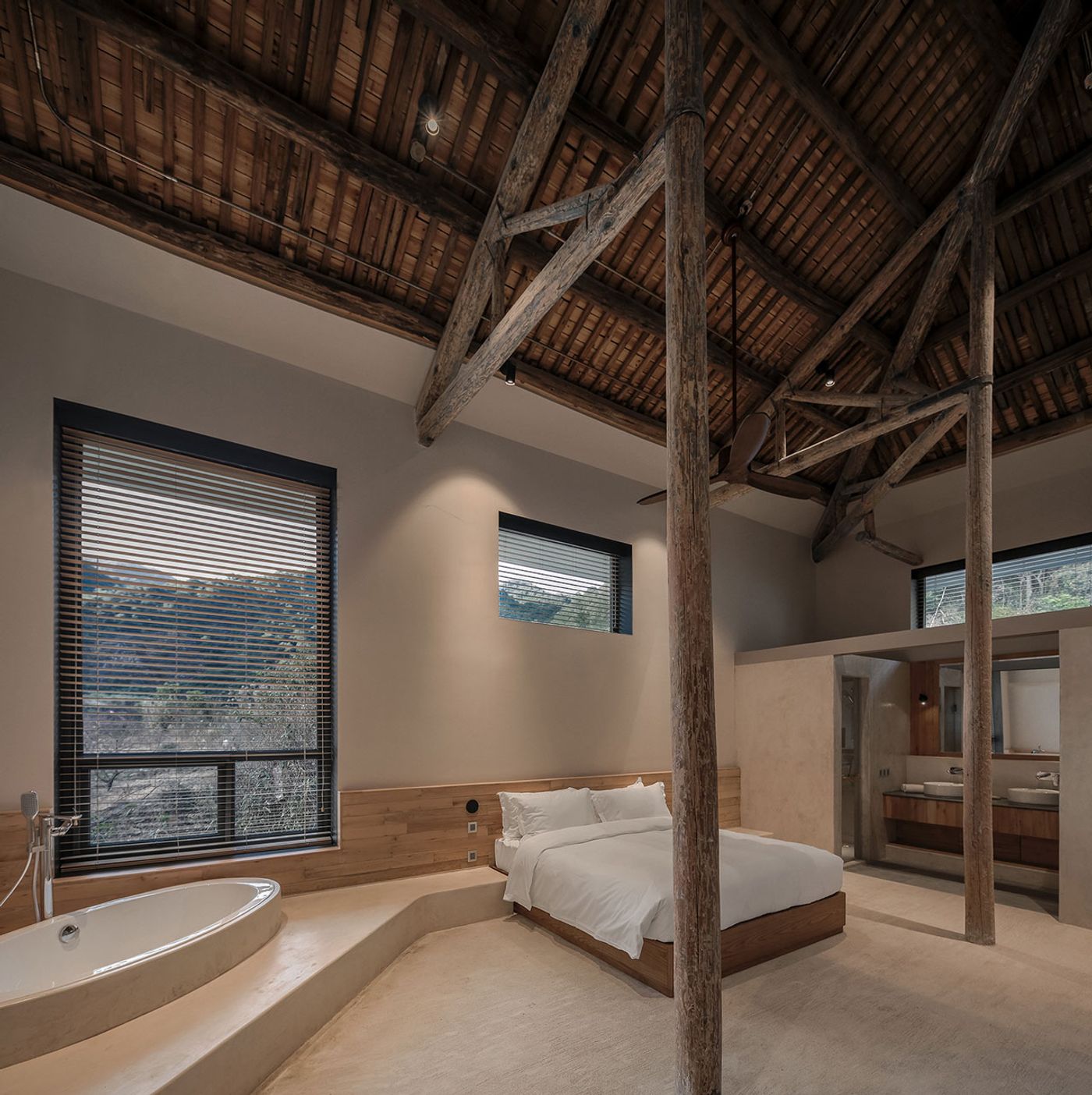
Photo by Su Shengliang.
Inside, the original timber roof structures have been revealed by removing the false ceilings to now function as a lyrical reminder of the estate’s history while imbuing the spaces with a sense of glorious spaciousness. The weathered roof trusses and timber posts, supported where necessary by red-painted steel beams, stand in juxtaposition to the minimalist décor and sparse modern furniture while the smooth, light-toned timber panelling and muted off-white and grey hues of the colour-washed walls and screed floors provide a soothing ambience.
All twenty-one guest rooms feature en-suite bathrooms that have been designed as rooms within a room, providing a more intimate scale within the confines of the double-height suites, while some also enjoy access to private balconies and sun rooms whose jagged outlines create a variety of viewpoints that bring the guests ever closer to the natural surroundings.

Photo by Su Shengliang.
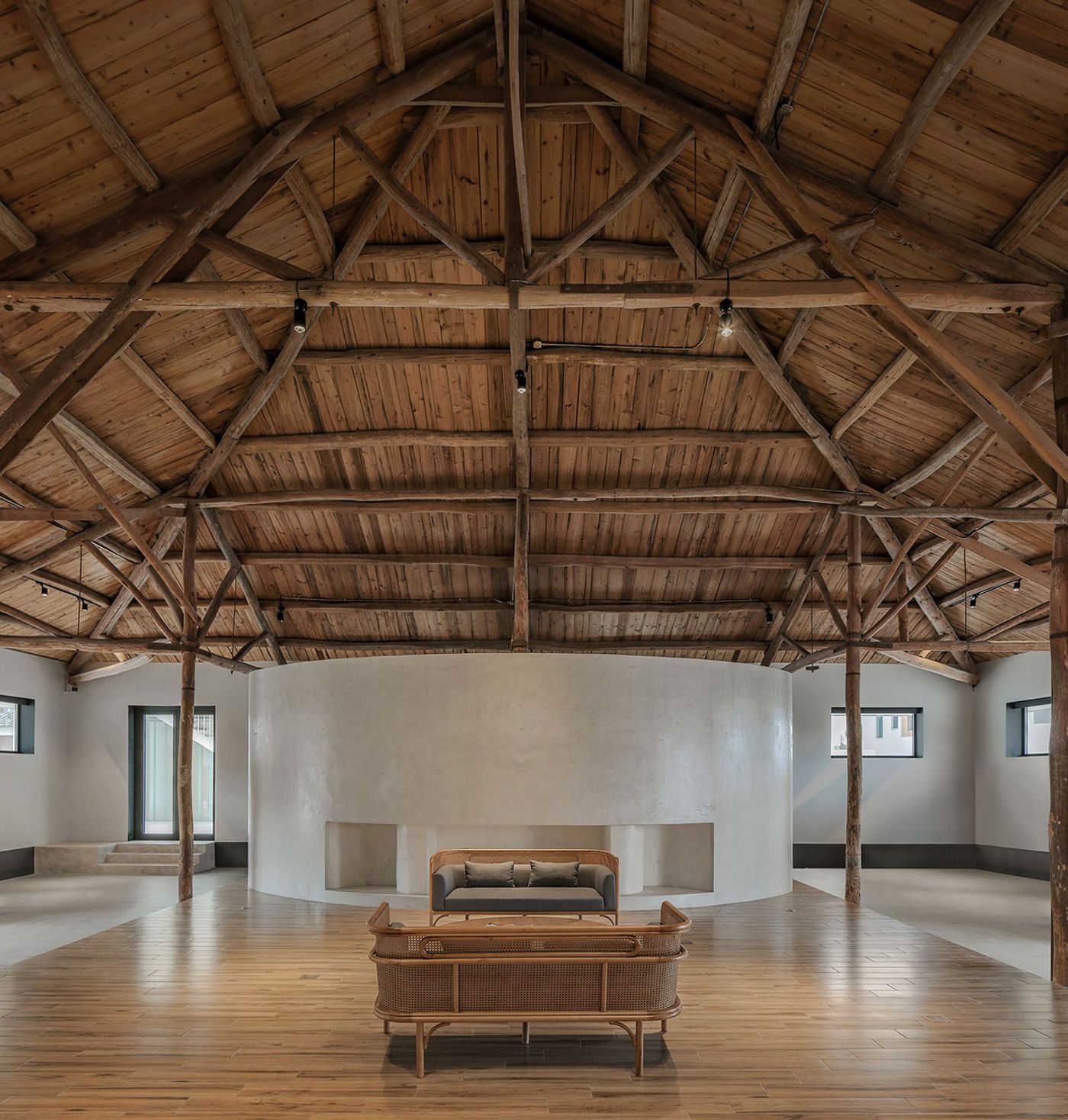
Photo by Su Shengliang.

Photo by Su Shengliang.
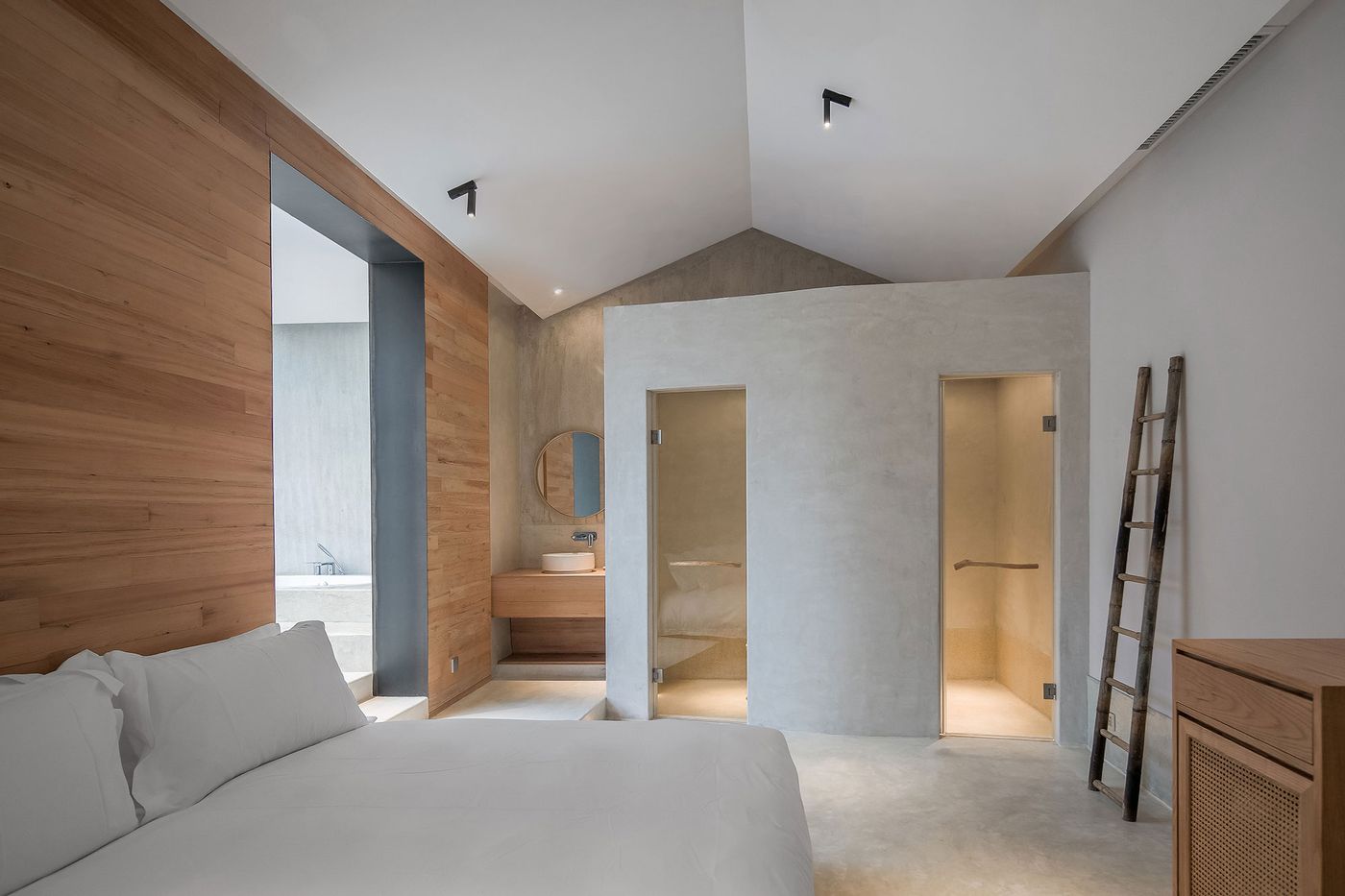
Photo by Su Shengliang.
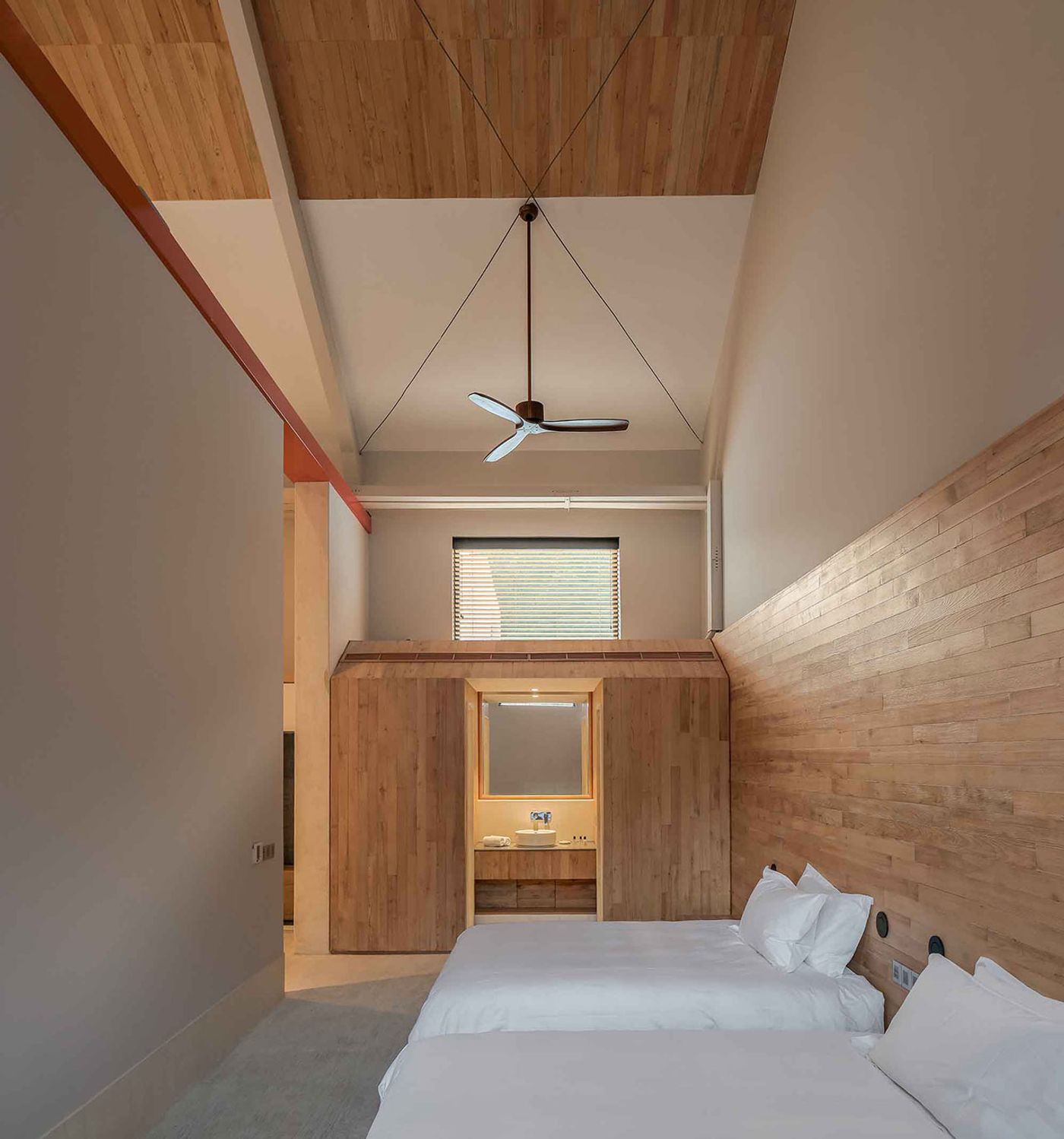
Photo by Su Shengliang.

Photo by Su Shengliang.
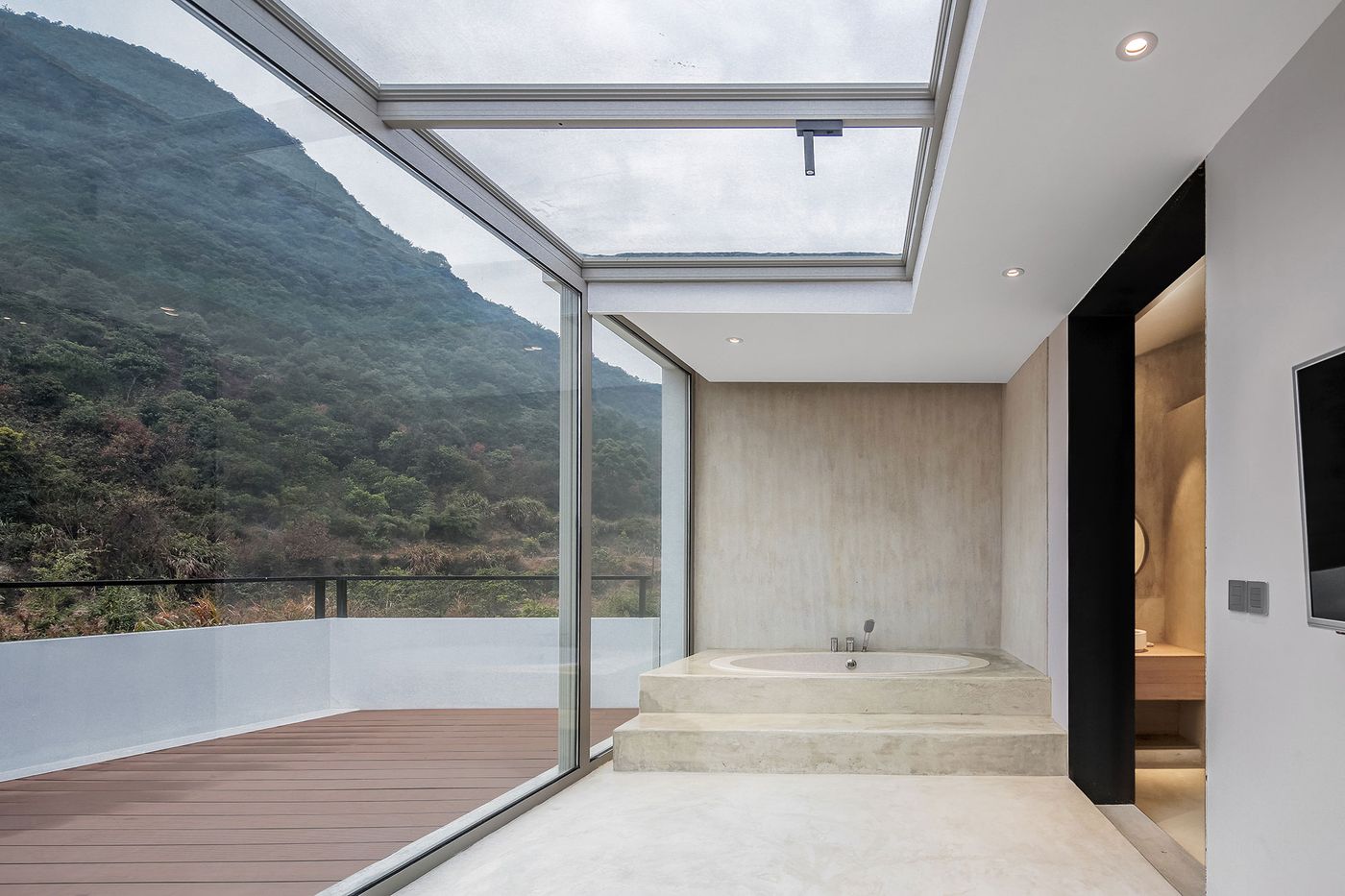
Photo by Su Shengliang.
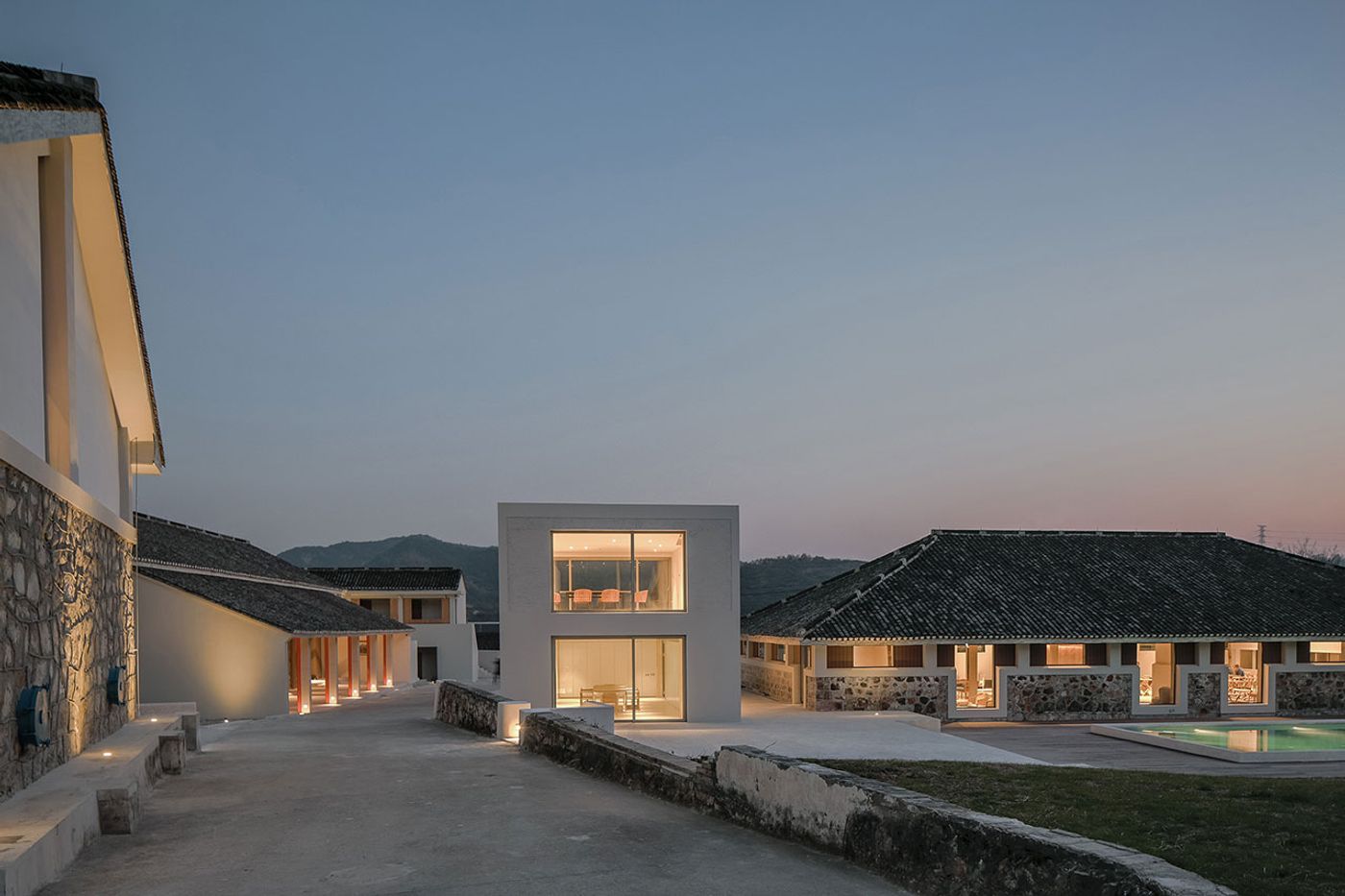
Photo by Su Shengliang.
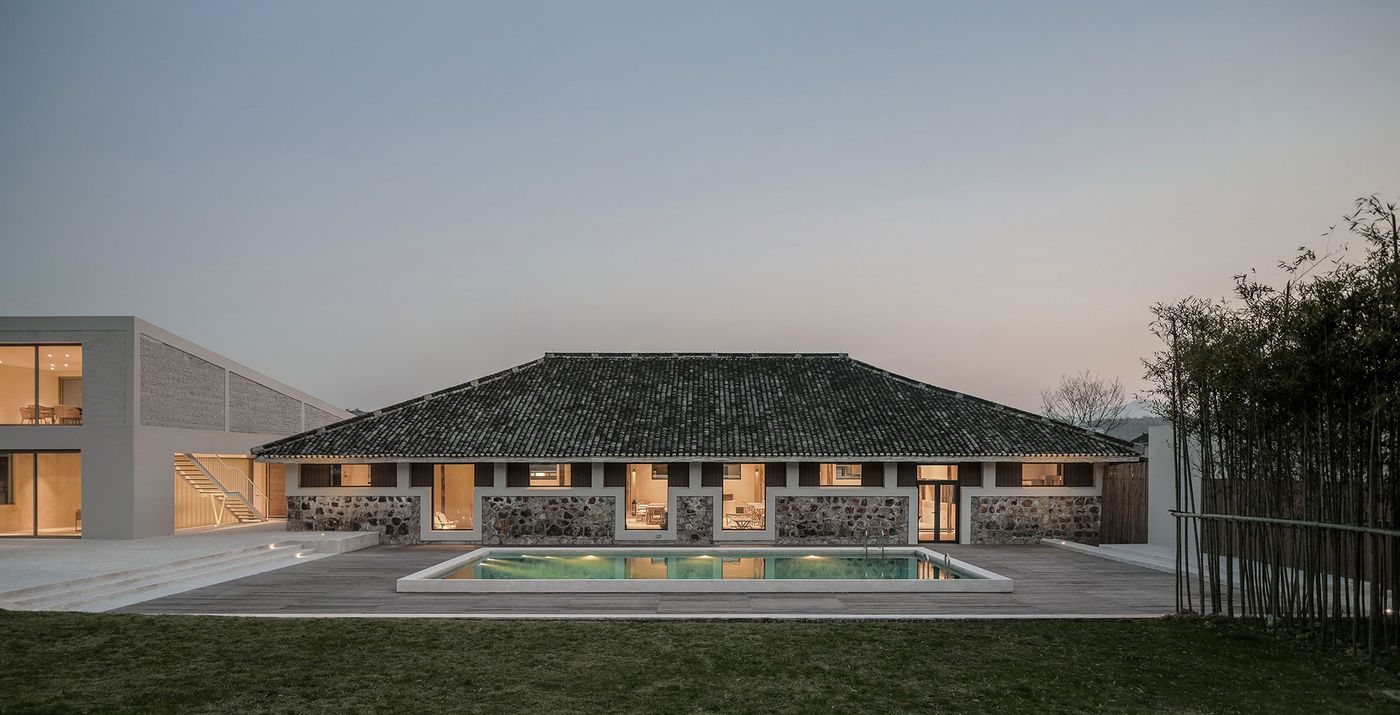
Photo by Su Shengliang.
